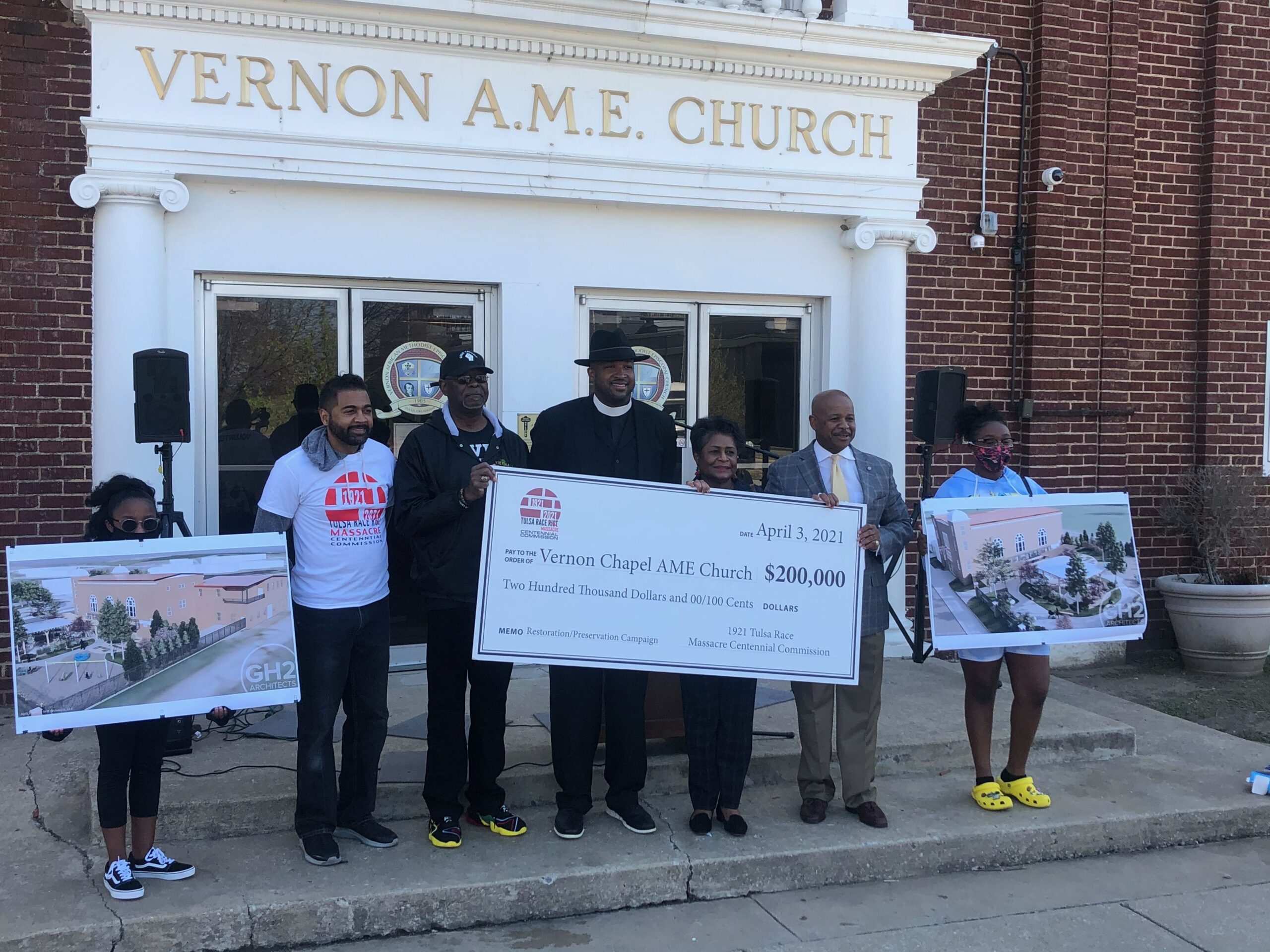
The 1921 Race Massacre Centennial Commission made a significant donation to a historic church that survived the massacre.
The Centennial Commission donated $200,000 to Vernon Chapel AME Church in Tulsa on Saturday.
The building has needed repairs over the years so it can remain a safe place to worship.
The $200,000 donation will help make those repairs possible.
Pastor Robert Turner told KJRH the donation will preserve a piece of history that will now be around much longer.
“This donation, what it would mean for the church, is it will greatly help us in our restoration campaign, it’ll greatly help this church be here for another 100 years, for other generations to see just this magnificent place built by those who died and survived and rebuilt Greenwood after the worst massacre in American history,” Turner said.

The casualties were enormous.
“In the wake of the violence, 35 city blocks lay in charred ruins, more than 800 people were treated for injuries and contemporary reports of deaths began at 36. Historians now believe as many as 300 people may have died,” the Tulsa Historical Society and Museum website states.












